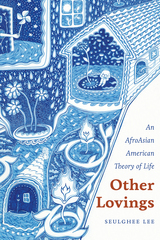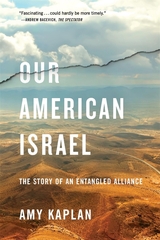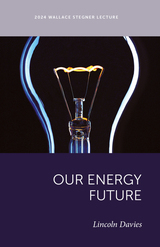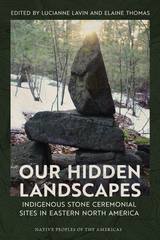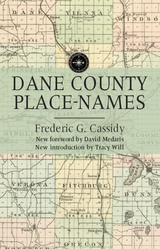
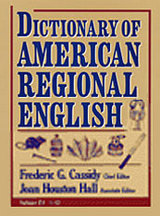
Dip into the Dictionary of American Regional English and enter the rich, endlessly entertaining, ever-changing world of American speech. Learn what a Minnesota grandma is making when she fixes lefse, what a counterman in a Buffalo deli means by kimmelweck or a Hawaiian baker puts into a malassada. Find out what kids on the streets of New York are doing when they play Johnny-on-the-pony or off-the-point, what Southerners do when they use their tom walkers, what the folks in Oklahoma and Texas celebrate on Juneteenth and those in some parts of Wisconsin at a kermis.
Like its enormously popular predecessors, this volume captures the language of our lives, from east to west, north to south, urban to rural, childhood to old age. Here are the terms that distinguish us, one from the other, and knit us together in one vast, colorful tapestry of imperfect, perfectly enchanting speech. More than five hundred maps show where you might be if you looked in a garden and saw moccasin flowers, indian cigars, or lady peas; if you encountered a bullfrog and cried, "jugarum!"; or came upon a hover fly and exclaimed, "newsbee!" And here, at long last, is an explanation of what the madstone and the money cat portend.
Built upon an unprecedented survey of spoken English across America and bolstered by extensive historical research, the Dictionary of American Regional English preserves a language that lives and dies as we breathe. It will amuse and inform, delight and instruct, and keep alive the speech that we have made our own, and that has made us who we are.

Volume I of the Dictionary of American Regional English (DARE), published to wide acclaim in 1985, captured the wondrous variety and creativeness of American folk words and expressions and tickled the imagination of lovers of language around the world. Decades in preparation, the DARE corpus reflects the liveliness of English as it is spoken on America’s main streets and country roads—the regional metaphors and similes passed along within homes and communities.
Like its popular predecessor, Volume II is a treasury of vernacular Americanisms. In Virginia a goldfinch is a dandelion bird, in Missouri an insufficient rain shower a drizzle-fizzle. Gate was Louis Armstrong’s favorite sender (a verbal spur to a sidekick in a band), a usage that probably originated from the fact that gates swing. Readers will bedazzled by the wealth of entries—more than 11,000—contained in this second volume alone. The two and a half pages on “dirt” reveal that a small marble is a dirt pea in the South. To eat dried apples, a curious rural euphemism for becoming pregnant, appears in the five pages on “eat.” Seven pages on “horn” and related words take readers on a tour of the animal and nether worlds: horned lark, horned frog, horned pout (look that one up), and that horned fellow, the devil.
Initiated under the leadership of Frederic G. Cassidy, DARE represents an unprecedented attempt to document the living language of the entire country. The project’s primary tool was a carefully worded survey of 1,847 questions touching on most aspects of everyday life and human experience. Over a five-year period fieldworkers interviewed natives of 1,002 communities, a patchwork of the United States in all its diversity.
The result is a database of more than two and a half million items—a monument to the richness of American folk speech. Additionally, some 7,000 publications, including novels, diaries, and small-town newspapers, have yielded a bountiful harvest of local idioms. Computer-generated maps accompanying many of the entries illustrate the regional distribution of words and phrases.
The entries contained in Volume II—from the poetic and humorous to the witty and downright bawdy—will delight and inform readers.

How do Americans really talk—what are their hometown, everyday expressions in the many regions and sections of this huge country? The Dictionary of American Regional English (DARE), twenty years in preparation, answers these questions. It gives visible proof of the diversity—and the vitality—of American folk language, past and present.
DARE includes thousands of words and phrases not found in conventional dictionaries, and out-of-the-way meanings for common terms. Here are local names for familiar objects, from old cars to frying pans to dust-balls under the bed (176 names for these); for plants, animals, and critters real and imaginary; for rainstorms and heat waves; for foods, clothing, children’s games and adults’ pastimes; for illnesses and traditional remedies. Here are terms—salty, sarcastic, humorous—by which people describe each other, their physical appearance, characters, emotions, states of mind. Here are metaphors and similes galore.
In Wisconsin a man whose motives are suspect “has beans up his nose.” In Georgia a conceited person is “biggity”; someone important or self-important in the Northwest is “bull of the woods.” A close friend may be “bobbasheely” (Mississippi) or an “ace boon coon” (New York City). West of the Appalachians the old saw “I wouldn’t know him from Adam” becomes “I wouldn’t know him from Adam’s off-ox” (or, in the South, “from Adam’s housecat”). These and some twelve thousand other expressions are identified and explained in the first volume of DARE.
While DARE is the work of many dedicated people, it owes its existence to Frederic G. Cassidy, who in 1963 agreed to organize the project, raise funds for it, and serve as Editor-in-Chief. Cassidy trained teams of fieldworkers and equipped them with a carefully worded questionnaire: 1,847 questions grouped in 41 broad categories ranging over most aspects of everyday life and common human experience. From 1965 to 1970 the fieldworkers conducted week-long interviews with natives of 1,002 representative communities in all fifty states. The two and a half million items gleaned from the fieldwork, coded and computer-processed, are DARE’s primary data base, a rich harvest of regional Americanisms current in the seventh decade of this century. Earlier collections have been drawn upon as well, notably the 40,000 expressions recorded by the American Dialect Society since 1889; and some 5,000 publications, including regional novels and diaries and small-town newspapers, have been combed for local idioms.
A unique feature of the dictionary is the computer-generated maps that accompany many of the entries to show the geographical distribution of the term. The base map is schematic, distorting the areas of the states to reflect their population density.
Volume I includes extensive introductory material on DARE itself and on American folk speech. Its entries, from Aaron’s rod to czarnina, cover nearly a quarter of the total DARE corpus.
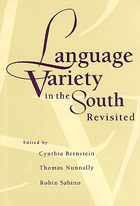
Top linguists from diverse fields address language varieties in the South.
READERS
Browse our collection.
PUBLISHERS
See BiblioVault's publisher services.
STUDENT SERVICES
Files for college accessibility offices.
UChicago Accessibility Resources
home | accessibility | search | about | contact us
BiblioVault ® 2001 - 2025
The University of Chicago Press


